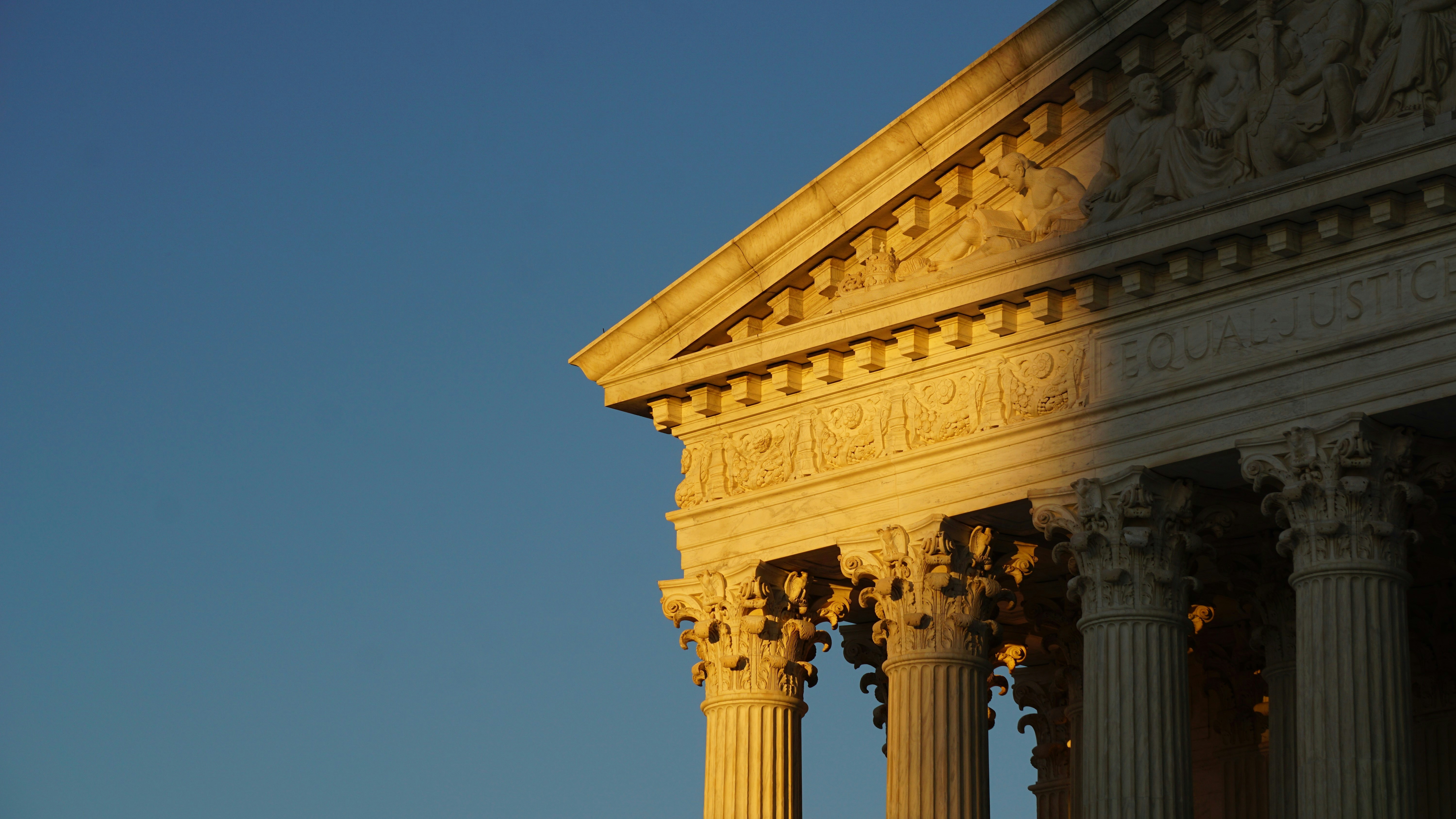The dissent that broke a justice


In Dissent is a recurring series by Anastasia Boden on Supreme Court dissents that have shaped (or reshaped) our country.
Please note that the views of outside contributors do not reflect the official opinions of SCOTUSblog or its staff.
It was a case that sent one justice into a mental health crisis and is said to have left another, just two weeks later, on the floor of his chambers from a stroke. A case that Chief Justice Earl Warren – the same man who presided over Brown v. Board of Education – called the most consequential of his career. Indeed, Baker v. Carr was so contentious it had to be argued twice. And though it was “merely” about maps, it produced a barnburner of a dissent that’s still relevant to debates about the proper role of judges today.
A lesser-known dissenter
Felix Frankfurter arrived in America at age 11 as an Austrian Jewish immigrant who spoke not a word of English. He would go on to become a Harvard law professor, a Franklin D. Roosevelt insider, and a brilliant Supreme Court justice whose legacy is muddled by his many contradictions.
His exacting temperament could be both off-putting and alluring. His open condescension made him enemies on the bench, including his ideological foe (and polar opposite) Justice William O. Douglas and Warren, whose open rebukes of Frankfurter in court made the cover of the New York Times.
But to his inner circle of “happy hot dogs” – his students, clerks, and friends – Frankfurter was magnetic. Even Justice Hugo Black, another judge with whom he often sparred, admired his intellectual acuity, as did his many mentees, who wound up occupying important positions in society (including constitutional theorist Alexander Bickel and New Deal architect James Landis).
The contradictions extended into his jurisprudence. Frankfurter had impeccable progressive bona fides – he was a confidant of FDR and early supporter of the ACLU – yet he is widely considered a “judicial conservative.” He was a passionate defender of racial equality, and yet he voted to uphold the internment of thousands of Japanese Americans in Korematsu v. United States. Early in his career, he opposed government censorship, and yet as a justice Frankfurter affirmed the convictions of Communist radicals based on their advocacy and upheld loyalty oaths. Even privately, Frankfurter’s liberalism was questionable. He turned down his friend (and Harvard Dean) Albert Sacks’ suggestion to hire Ruth Bader Ginsburg as a law clerk based on antiquated concerns about her having a family.
In the judicial realm, at least, Frankfurter’s apparent contradictions can be explained by his unwavering belief in democracy. In his view, people should resort to politics before the courts, and courts should step in only when absolutely necessary so as not to usurp popular sovereignty.
In Baker v. Carr, the court was asked to consider this very issue: the scope of judicial power, and in particular, its power over a state legislature’s redistricting decisions – that is, the manner in which to choose its representatives. It was a Marbury v. Madison moment of the 20th century, at least for Frankfurter, and it was when the great champion of judicial restraint realized his life’s work had lost.
The “crazy quilt” of Tennessee
Even though it was the 1950s, Tennessee hadn’t redrawn its legislative districts since 1901. In the intervening half-century, the state’s population had exploded from just over 2 million to more than 3.5 million, and the number of registered voters had quadrupled. Urban growth had outpaced growth in rural areas. Yet the state’s voting maps had remained frozen in time.
The result was what one justice would later call a “crazy quilt” of districts, and one that favored rural voters: About one-third of the state’s rural voters elected two-thirds of its state legislators. Moore County, which had a population of 2,300, elected one representative; Shelby County, with 135 times the population (312,000), elected just seven. Another way of putting it is that a resident of Moore County had nearly 20 times the voting power of a voter in Shelby County.
In short, rural voters had outsized influence over who was elected, what policies were passed, and where money was spent. And every effort to fix the imbalance – through legislation, constitutional convention (which had to be called by the legislators themselves), and gubernatorial pressure – had failed. The incentives against and roadblocks to reform were so strong that the system stayed in place even though it contradicted the state’s own constitutional mandates that districts be redrawn every 10 years.
A group of Tennessee voters sued, claiming that the decades-old maps diluted their votes and that the state’s refusal to update them violated their rights under the due process and equal protection clauses of the 14th Amendment.
The district court dismissed the case, citing a string of precedents suggesting that political gerrymandering was a “political question” – a type of claim federal courts had no business deciding because it was purely for the state’s political branches or Congress to deal with. When a question is better suited to politics, and there are no constitutionally mandated standards that judges can employ to answer it, courts generally stay out of the fray. But here, the plaintiffs said, Tennessee’s redistricting plan wasn’t just abstractly “unfair,” it lacked any legitimate justification at all and it treated them differently than people in the countryside. That, they said, was a constitutional question that judges should hear. And so they appealed the case up to the Supreme Court.
Judging justiciability
Frankfurter put a great deal of pressure on the attorneys at oral argument, including Solicitor General Archibald Cox. (Yes, that’s the same Archibald Cox who would eventually be hired to investigate Watergate and then be fired by President Richard Nixon, spawning the Ethics in Government Act and leading to Morrison v. Olson, featured in my previous column.)
After two days of argument and an initial vote by the justices, the court was deadlocked: 4-4-1. According to his biographer, at the justices’ conference, Frankfurter began pulling books of court opinions off the shelves and lecturing the other justices for hours. He argued that courts had no power to hear cases involving political gerrymandering, because it was inherently a question left to the states or to Congress, and in any event, there were no intelligible standards for judges to enforce – that is, judges had no expertise (or context) in drawing up political districts on anything other than (in Frankfurter’s view) judicial whim. He deeply feared that allowing judges to wade into “the political thicket,” as he called it, would undermine the judiciary’s legitimacy by allowing courts to control legislative judgments.
Given the tension, on Justice Potter Stewart’s request, the court reheard the case the following term. But what had initially appeared like a close fight turned into a crushing defeat as Frankfurter slowly lost his numbers. Justice Charles Whittaker, who was torn about the decision and had written draft opinions on each side, abruptly left Washington for the country, where he suffered a nervous breakdown. In the end, he didn’t vote in the case and never returned to the court. Justice Tom Clark, initially inclined toward Frankfurter’s view, switched his vote. And Stewart, whom Frankfurter had attempted to cultivate to his side, voted the other way. With the other justices, Frankfurter never had a chance. The final tally was 6-2, with only Justices John Marshall Harlan II and Frankfurter dissenting. The court held that claims of vote dilution under the equal protection clause were justiciable – that is, federal courts could review them.
Writing for the majority, Justice William Brennan said that “[t]he doctrine of which we treat is one of ‘political questions,’ not one of ‘political cases.’” True, this case had political overtones, but the court had a responsibility to address state action. Brennan refused to articulate what, exactly, was required of states here, however, writing only to observe that the case was justiciable.
The concurrences were more dramatic. Douglas asked the dissenters whether they would consider it nonjusticiable if a governor, “like Fidel Castro,” simply suspended all election laws. Clark said Frankfurter’s dissent was “bursting with words that go through so much and conclude with so little.” The majority, he said, wasn’t requiring any specific formula for states; it was merely requiring the state to put up “any state of facts” that could reasonably justify its potentially arbitrary gerrymandering plan. “The discrimination here does not fit any pattern – as I have said, it is but a crazy quilt.”
But none of the opinions were as painstaking as Frankfurter’s dissent.
The last dissent
Frankfurter was devastated. He believed the court had stepped into a morass, a “political thicket,” that would destroy its credibility. The pages of his dissent far outnumbered the majority. It painstakingly went through precedent to show that redistricting had always been considered a political question unless there was some allegation of invidious discrimination. He wrote a history lesson on Founding-era redistricting plans. He said this equal protection clause claim was really just an argument under the guarantee clause, which broadly guarantees a republican form of government but has always been deemed non-justiciable. In Frankfurter’s view, the court had prized judicial power over democratic choice.
Frankfurter concluded:
“Those observers of the Court who see it primarily as the last refuge for the correction of all inequality or injustice, no matter what its nature or source, will no doubt applaud this decision and its break with the past. Those who consider that continuing national respect for the Court’s authority depends in large measure upon its wise exercise of self-restraint and discipline in constitutional adjudication will view the decision with deep concern.”
Just weeks later, Frankfurter’s secretary found him on the floor of his chambers after having suffered a stroke. It was the last opinion he would ever write.
Epilogue
Despite the majority’s hesitancy to do so in Carr, and consistent with Frankfurter’s warnings, the court did wind up prescribing further standards for state redistricting plans. In 1964’s Reynolds v. Sims, it deemed the now-familiar “one person, one vote” rule constitutionally required – that is, voters in each district must roughly enjoy the same weight in the same state. Later, the court prohibited states from enacting any plans that dilute the voting power of racial groups. The result is that courts can, and do, throw out legislative maps all the time, and in some cases, they even redraw them.
At the same time, it’s not true that Baker v. Carr opened the Pandora’s box for judges to oversee state elections completely – Frankfurter’s ultimate fear. Even as recently as 2019, Chief Justice John Roberts affirmed that courts cannot hear cases related to partisan gerrymandering, the practice of considering voters’ political parties when drawing district lines. That, he said, truly is a political question – unlike Baker v. Carr, where the court could resolve the case without necessarily siding with a particular political faction.
Baker v. Carr has put the Supreme Court at the center of some of the most heated political debates of the century (including Bush v. Gore, an equal protection challenge to presidential election recount decisions). Its real lesson isn’t that judges should always intervene – or never intervene. It’s that deciding when to act is the hardest part of judging. And perhaps the most vital.
Posted in In Dissent, Recurring Columns